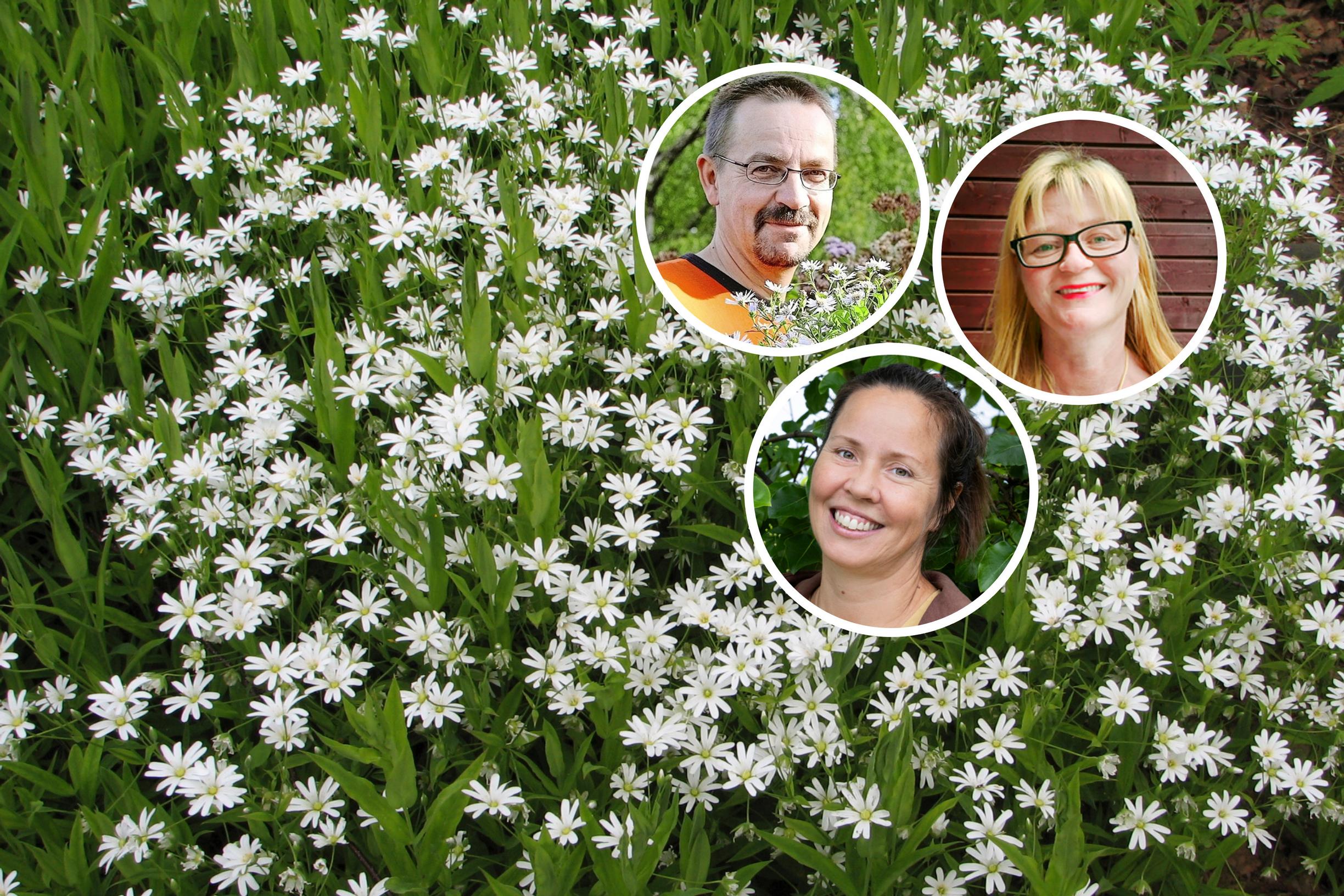
Perennials for tree shade: “a phenomenal ability to thrive”
Under trees, light and moisture can vary—nursery professionals share their favorite perennials for these conditions.
Three favorites from Jari Särkkä

Greater starwort
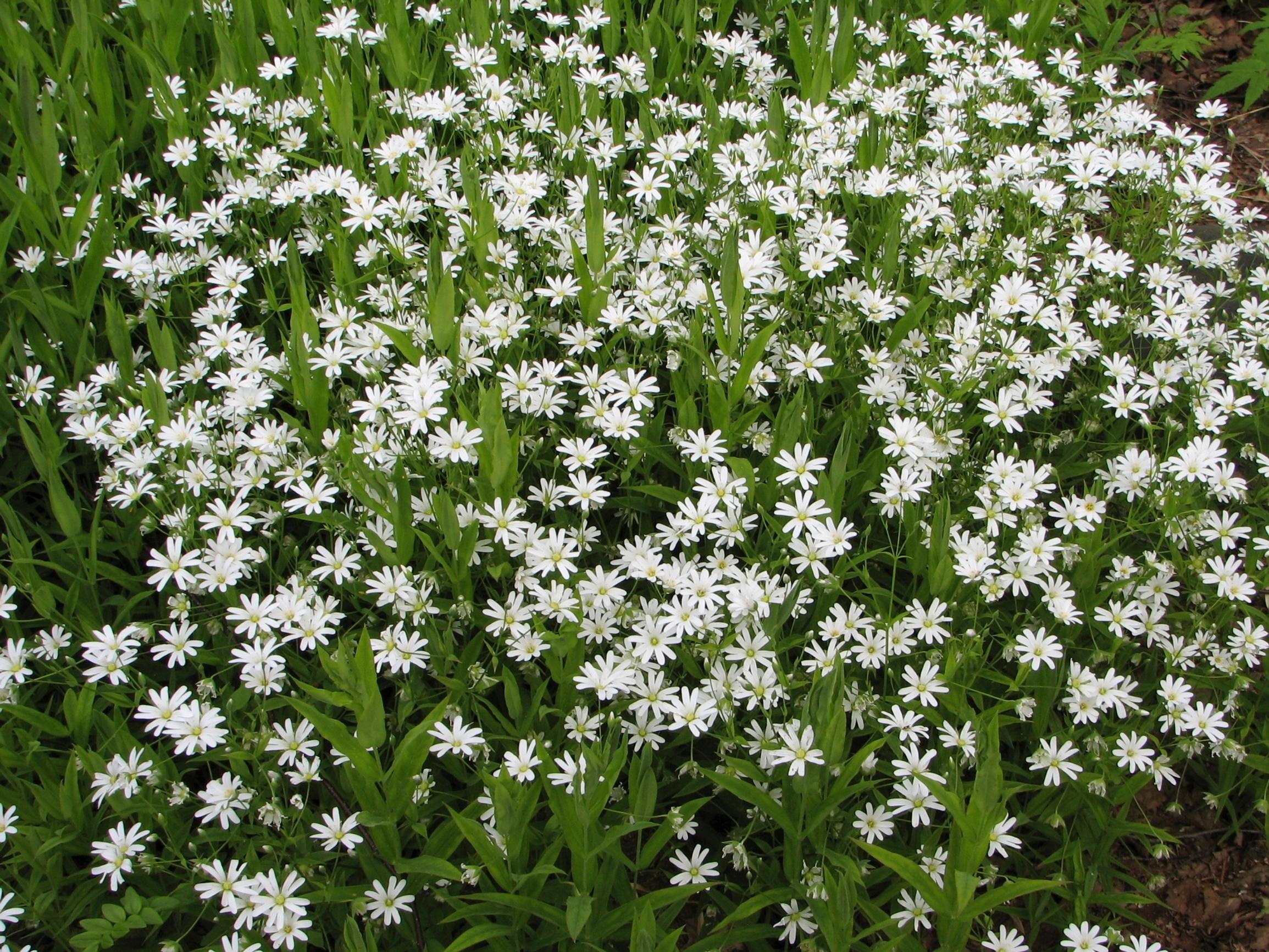
What is it? In southern Finland, the naturally occurring, partial shade–loving greater startwort (Rabelera holostea, formerly Stellaria holostea) quickly fills space under trees.
Why? This remarkably undemanding plant has a phenomenal ability to thrive! Its foliage partially overwinters while still green, brightening the early season with its blooms.
Where to plant? I’d plant greater starwort alone as a groundcover in a tree’s shade, as it spreads vigorously when happy. It does well among both deciduous and coniferous trees. Space seedlings 35 centimeters (about 14 in) apart, with around 20 centimeters (about 8 in) of soil. If there’s extra soil and moisture, ostrich fern also thrives in the same area.
Light requirement: partial shade
Height: 20–25 centimeters (about 8–10 in)
Bloom time: May–June
Red bistort
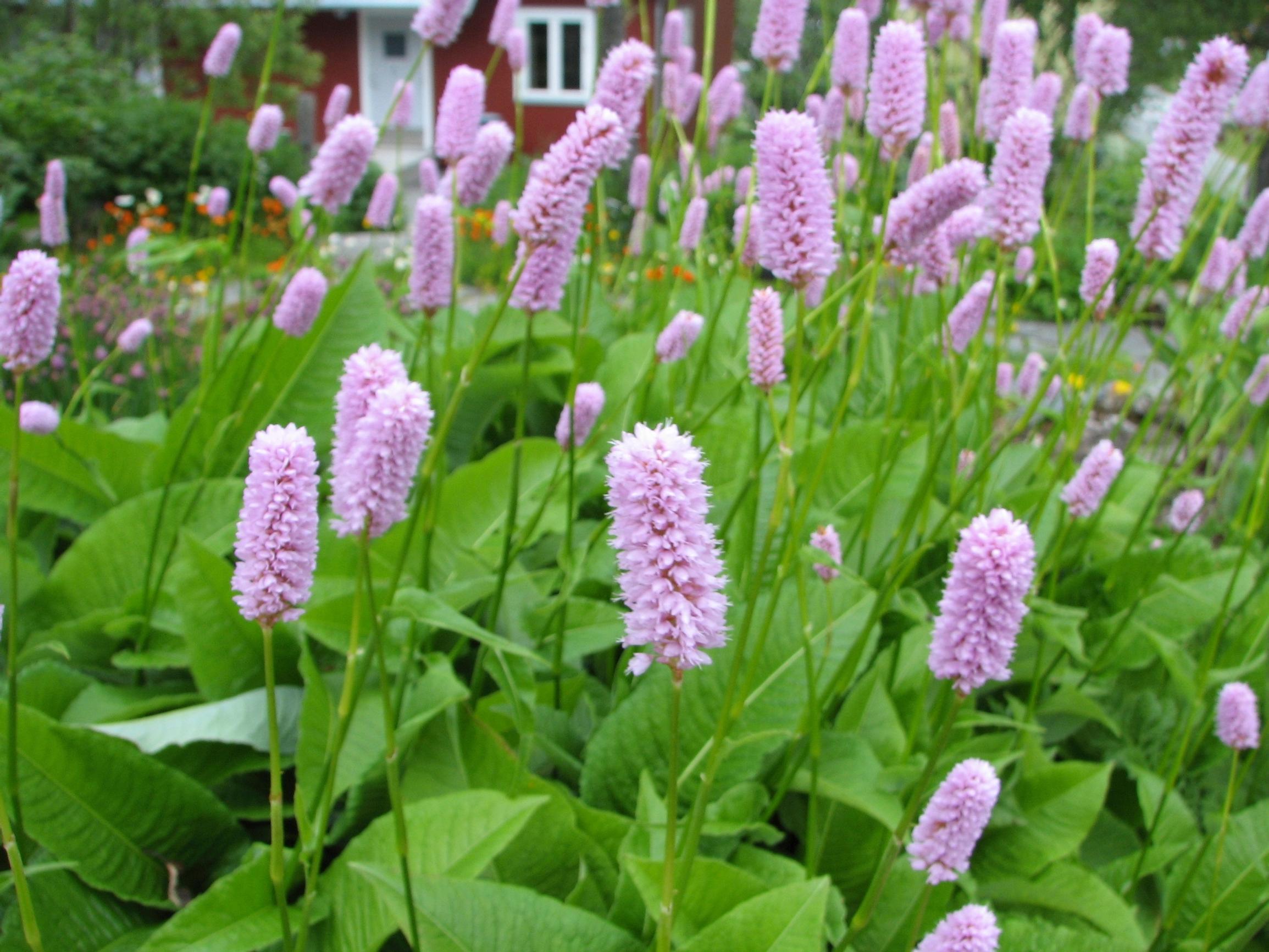
What is it? The lush red bistort (Bistorta officinalis ‘Superba’) has large leaves and pale lilac flowers, making it an eye-catching perennial. Some summers, it may bloom again in late season.
Why? This resilient species isn’t picky about growing conditions: it thrives in sun or shade, in dry or moist soil, and even in wet ground. Its flower stems hold thick, spike-shaped blooms up to about half a meter (about 50 cm / 20 in) high. After flowering, you can trim off the blooms, leaving a lush, deep-green leaf canopy that blocks out weeds.
Where to plant? A soil depth of around 30 centimeters (about 12 in) and spacing of 40 centimeters (about 16 in) are ideal. Good companion plants include bristle-pointed iris and yellow iris.
Light requirement: from sun to shade
Height: 50 centimeters (about 20 in)
Bloom time: June–July
Narrow-leaved everlasting pea
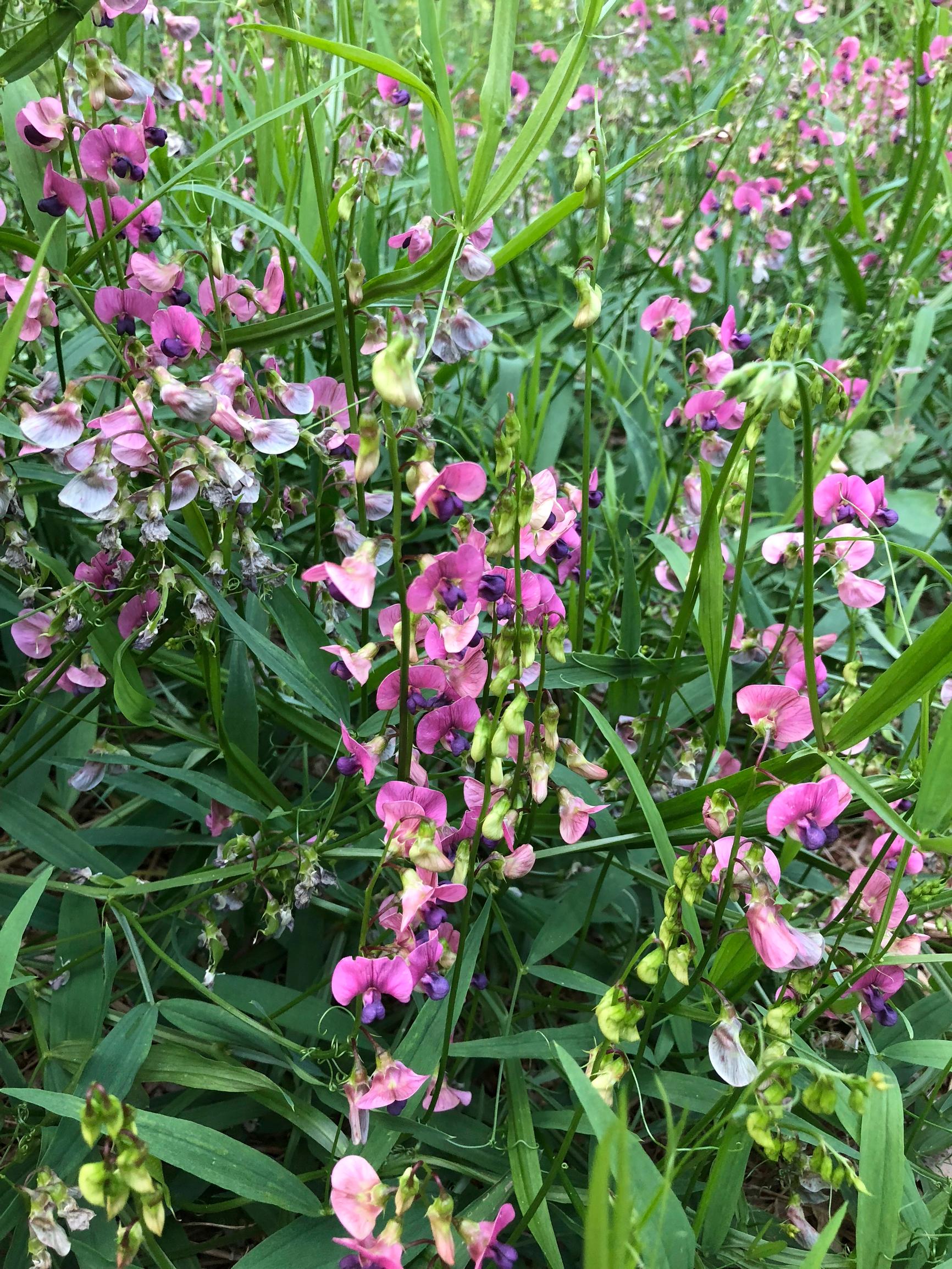
What is it? Narrow-leaved everlasting pea (Lathyrus sylvestris) grows wild on ridge slopes in southern Finland and tolerates extreme drought.
Why? As a twining or creeping herbaceous vine, it uses leaf tendrils to climb. It can lean on bigger plants or sprawl around the base of a tree. The pale pink blossoms are exceptionally pretty.
Where to plant? Easygoing metsänätkelmä needs a sunny spot, so enough light must reach under the tree. It thrives in sandy or gravelly soil and dislikes clay, peat—or relocation. Provide about 30 centimeters (about 12 in) of well-draining soil, with 40 centimeters (about 16 in) spacing.
Light requirement: full sun
Height: 80–150 centimeters (about 31–59 in)
Bloom time: July–August
The Särkkä nursey is located in Raahe in Finnish zone V (roughly USDA zone 4 or a similarly cool climate), sarkanperennataimisto.fi
Three favorites from Silja Kroschel

Hostas
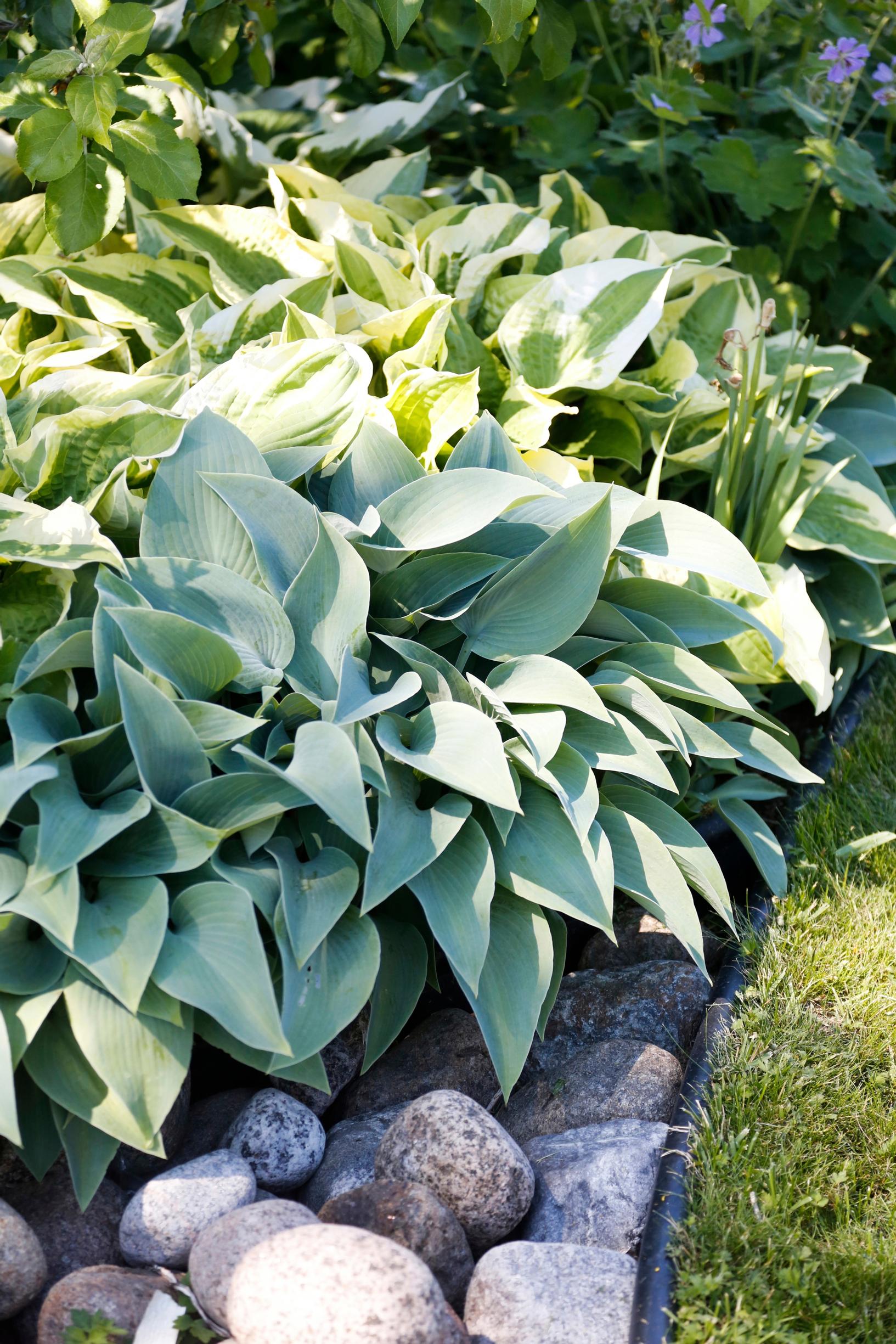
What is it? Among hostas (Hosta), there are tall and short, robust and delicate varieties, striped and solid-colored, with leaf textures that can even be a bit bumpy.
Why? You can create both bright and deeper shade plantings under trees using kuunliljat, depending on leaf color. They’re an easy way to form large, lush plantings—even up north.
Where to plant? One of my favorites is the bluish-gray ‘Halcyon’ (shown), which adds depth in a shady spot. Meanwhile, the showy ‘Gold Standard’ changes leaf color beautifully over the summer. Loosen the soil with compost and space plants 40 centimeters (about 16 in) apart. I like pairing them with Siberian waldsteinia, cranesbill, or even shooting star.
Light requirement: partial shade to shade
Height: 50–60 centimeters (about 20–24 in)
Bloom time: July–August
Siberian waldsteinia
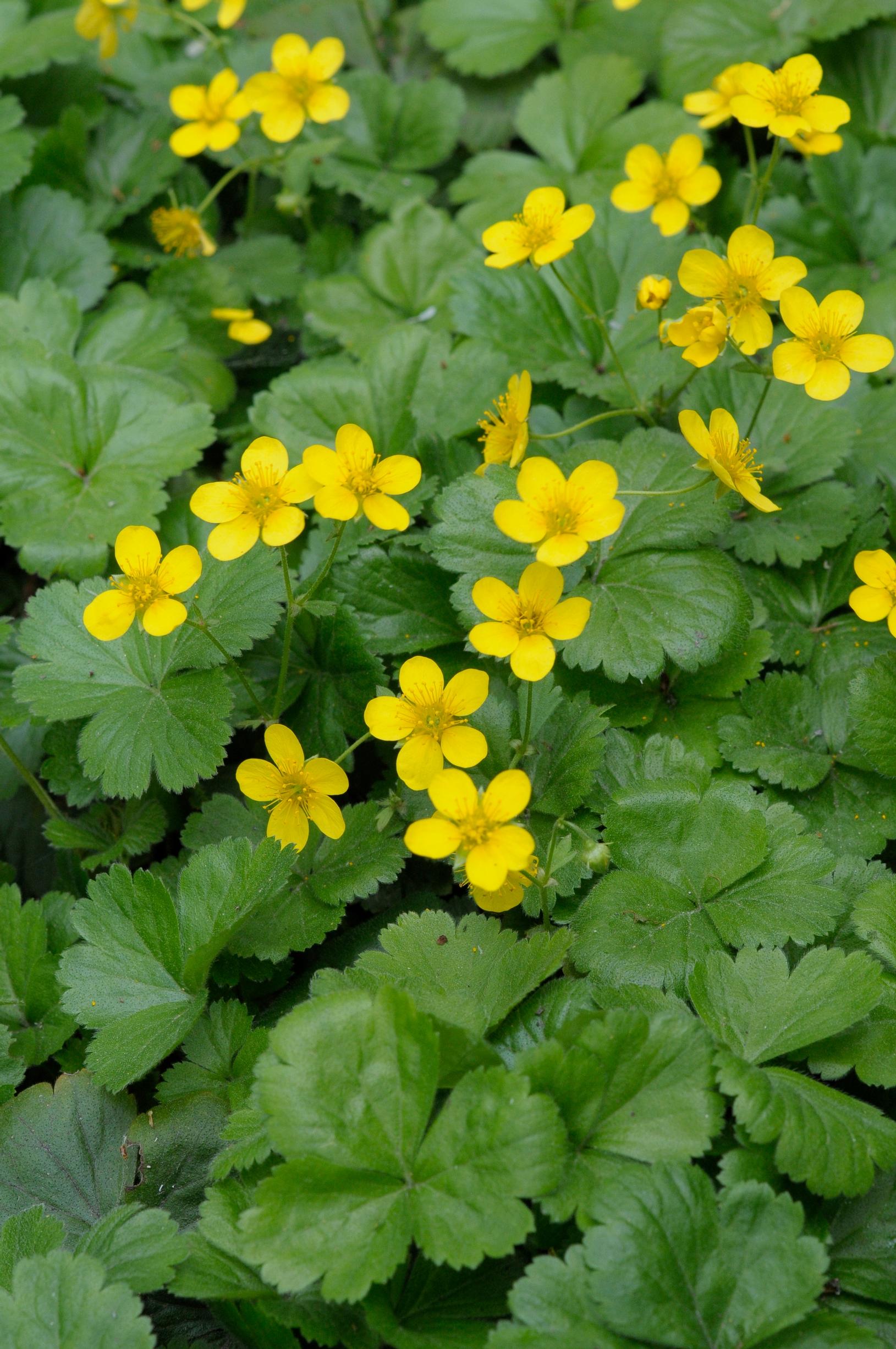
What is it? Siberian waldsteinia (Waldsteinia ternata) spreads beneath tree cover via underground rhizomes and above-ground runners.
Why? This hardy perennial’s only drawback is that it can scorch in strong spring sun—but that’s no issue in tree shade. Siberian waldsteinia is great at blocking weeds with its even, dense carpet, and it’s also extremely winter-hardy.
Where to plant? Low growing yet lush, Siberian waldsteinia requires very little soil and tolerates all conditions, including a tree’s root zone. Plant 30 centimeters (about 12 in) apart for a quick, full cover.
Light requirement: from sun to shade
Height: 10 centimeters (about 4 in)
Bloom time: June
Foam flower
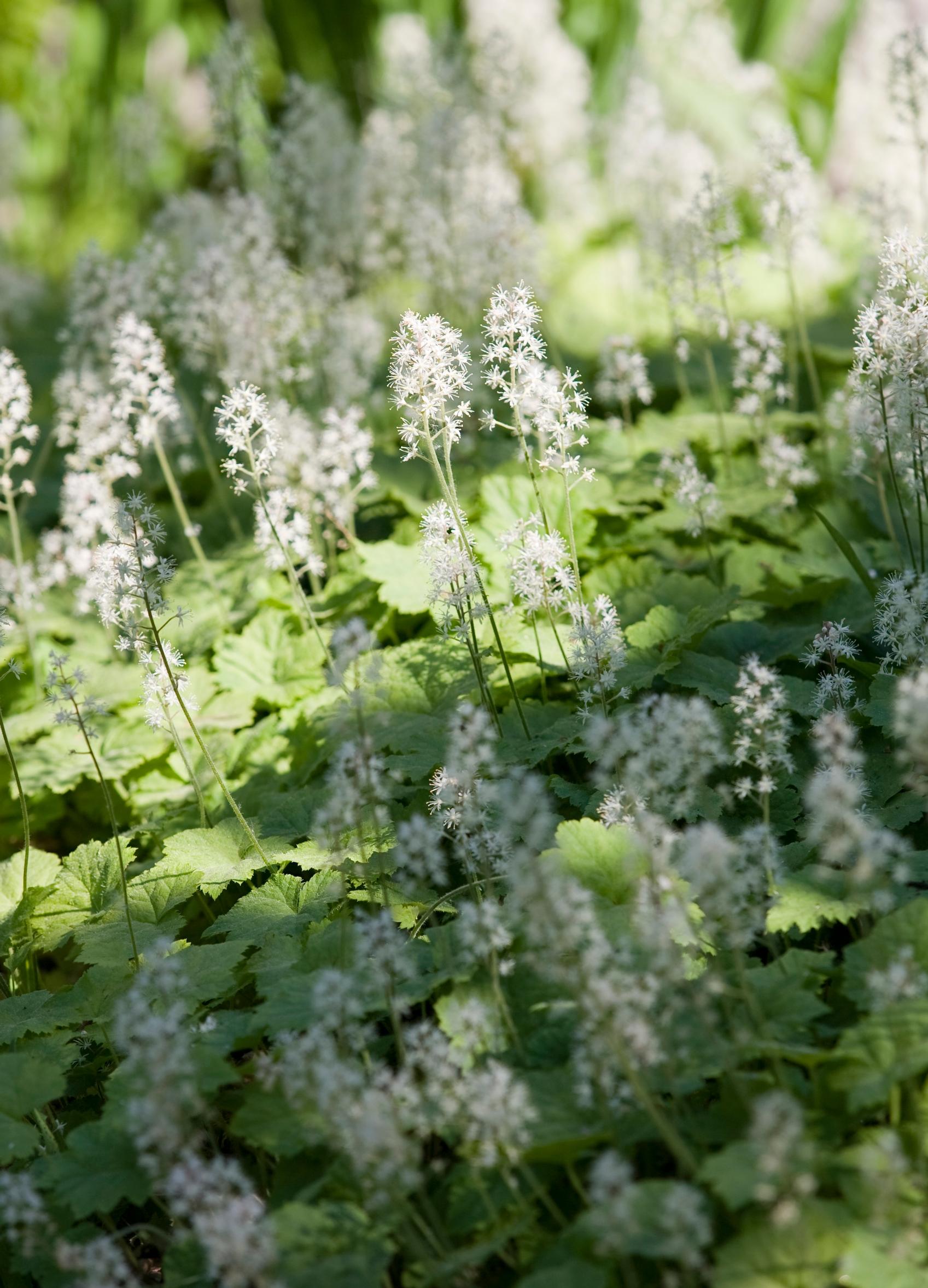
What is it? White-blooming foam flower (Tiarella cordifolia) is known locally by its Swedish name spetsmössa (lace cap).
Why? Staying true to its creeping nature, this dense groundcover brightens its surroundings, spreads vigorously, and holds its own against weeds. I especially like the combination of airy blooms and fresh green leaves.
Where to plant? Foam flower is at its best in large swathes. A spacing of about 30 centimeters (about 12 in) works well. This versatile perennial pairs nicely with hostas, since more delicate plants might struggle. Dwarf Chinese astibles also make great companions.
Light requirement: partial shade to shade
Height: 20 centimeters (about 8 in)
Bloom time: June
Tornionlaakson Puutarha & Unelmat nursery is located in Tornio in Finnish zone VI (comparable to about USDA zone 4 or 5), tornionlaaksonpuutarha.com
Three favorites from Sanna Elo at Paratiisin Taimitarha

Japanese spurge
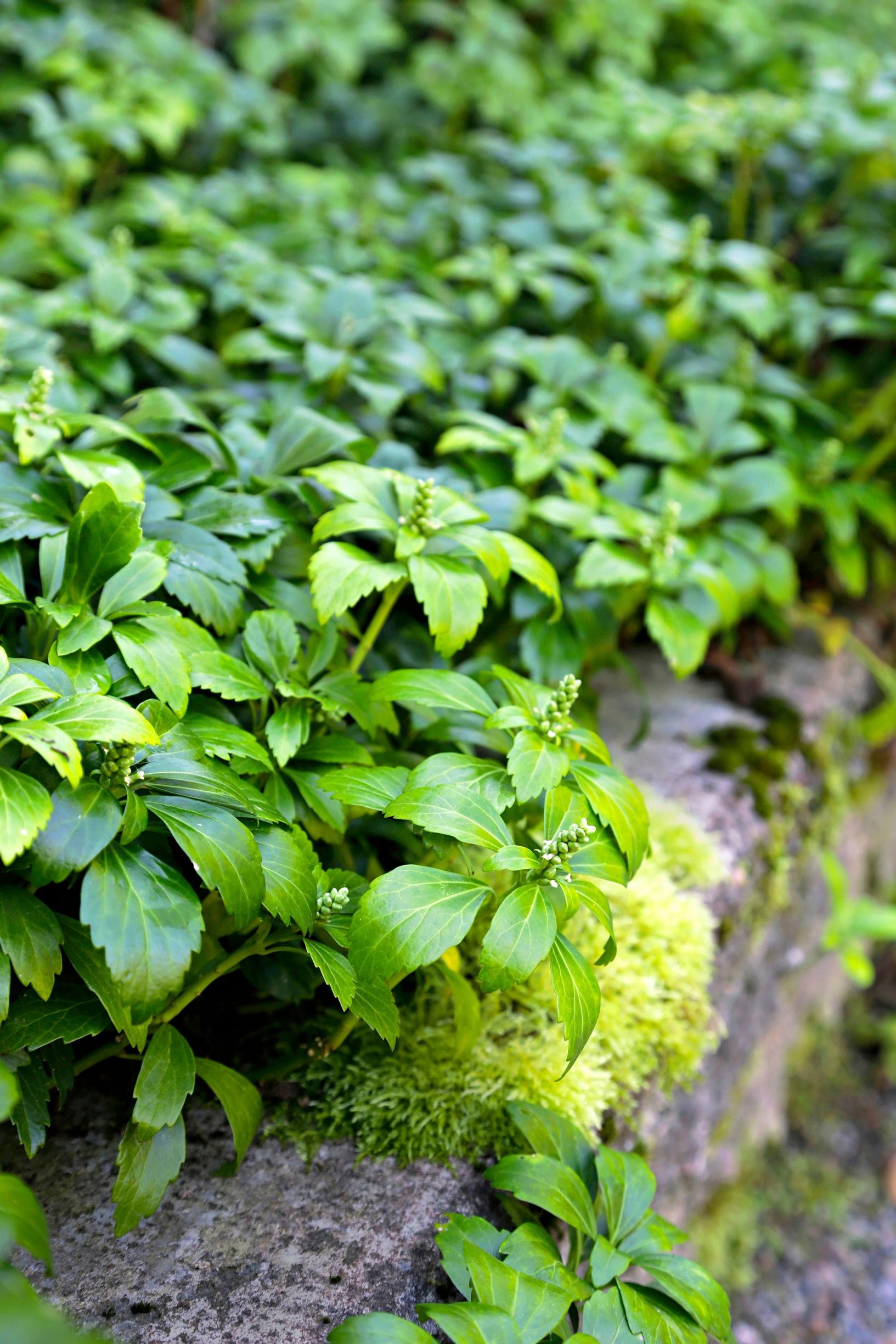
What is it? Japanese spurge (Pachysandra terminalis) creates an attractive evergreen carpet under trees.
Why? Its shiny, bright-green leaves really stand out beneath trees. If you want a tree to stand out, varjoyrtti is ideal. It’s excellent for tough spots: at my childhood home, it has formed a large, continuous patch beneath old apple and plum trees over decades and even tolerates some foot traffic.
Where to plant? Ideally spaced at 30 centimeters (about 12 in), varjoyrtti does best in rich, loamy soil, but it’s hardy enough for drier spots, too. If you have space, you could pair it with goat's beard.
Light requirement: partial shade to shade
Height: 20 centimeters (about 8 in)
Bloom time: June
Lily of the valley
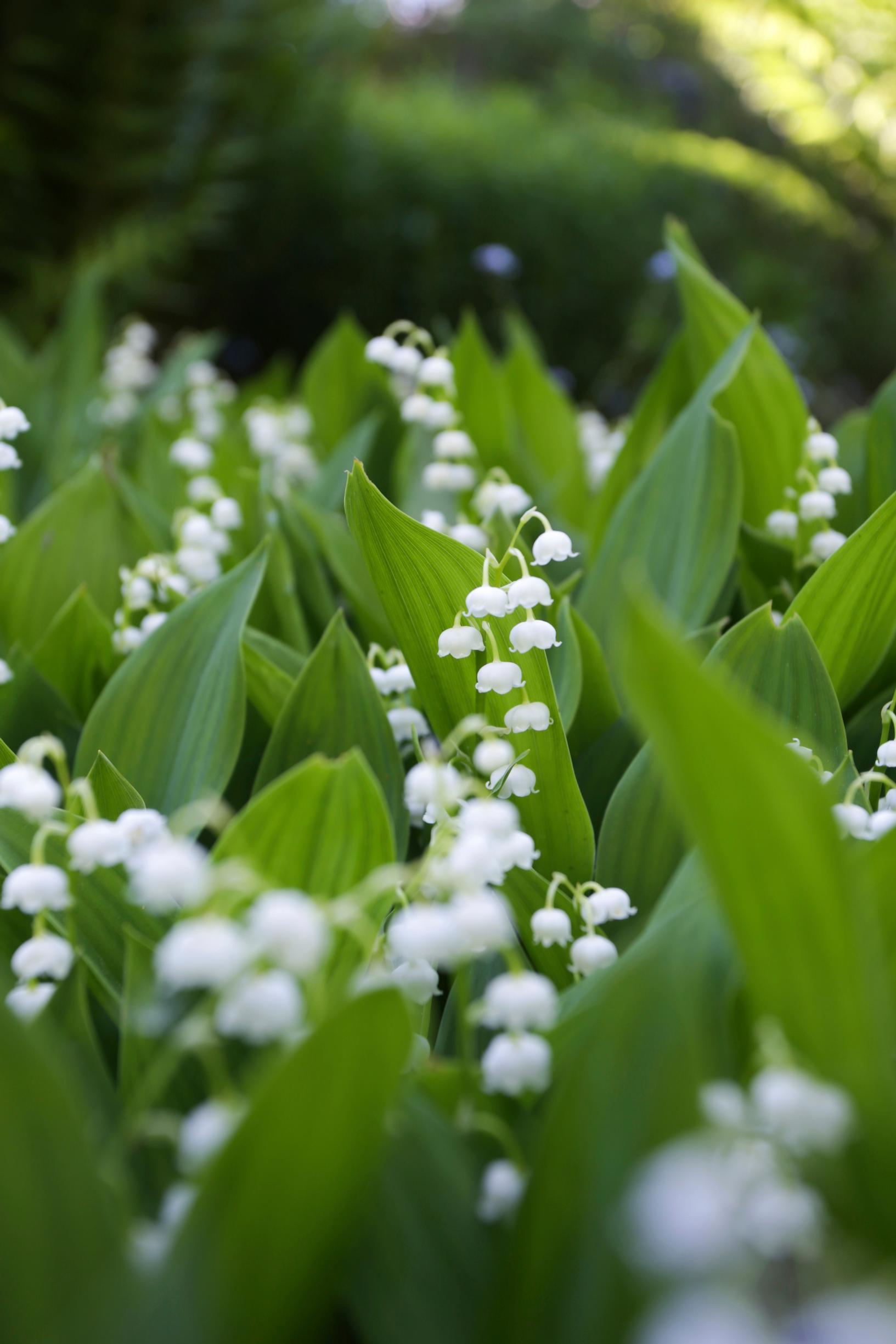
What is it? Lily of the valley (Convallaria majalis) looks best in a woodland-style garden, tucked under trees and shrubs.
Why? Its early-summer bloom and wonderful scent are such a delight! In fertile, moist soil, the leaves stay lovely for a long time. This year, thanks to rainy and cool weather in early summer, the leaves of my lily of the valley still looked great at the end of June.
Where to plant? Our national flower grows naturally and is a hardy groundcover. I think lily of the valley is most elegant when allowed to spread via rhizomes into a big patch. I planted grape hyacinths among mine because I love the sweet blue-and-white combination.
Light requirement: partial shade to shade
Height: 20 centimeters (about 8 in)
Bloom time: May–June
Lesser periwinkle
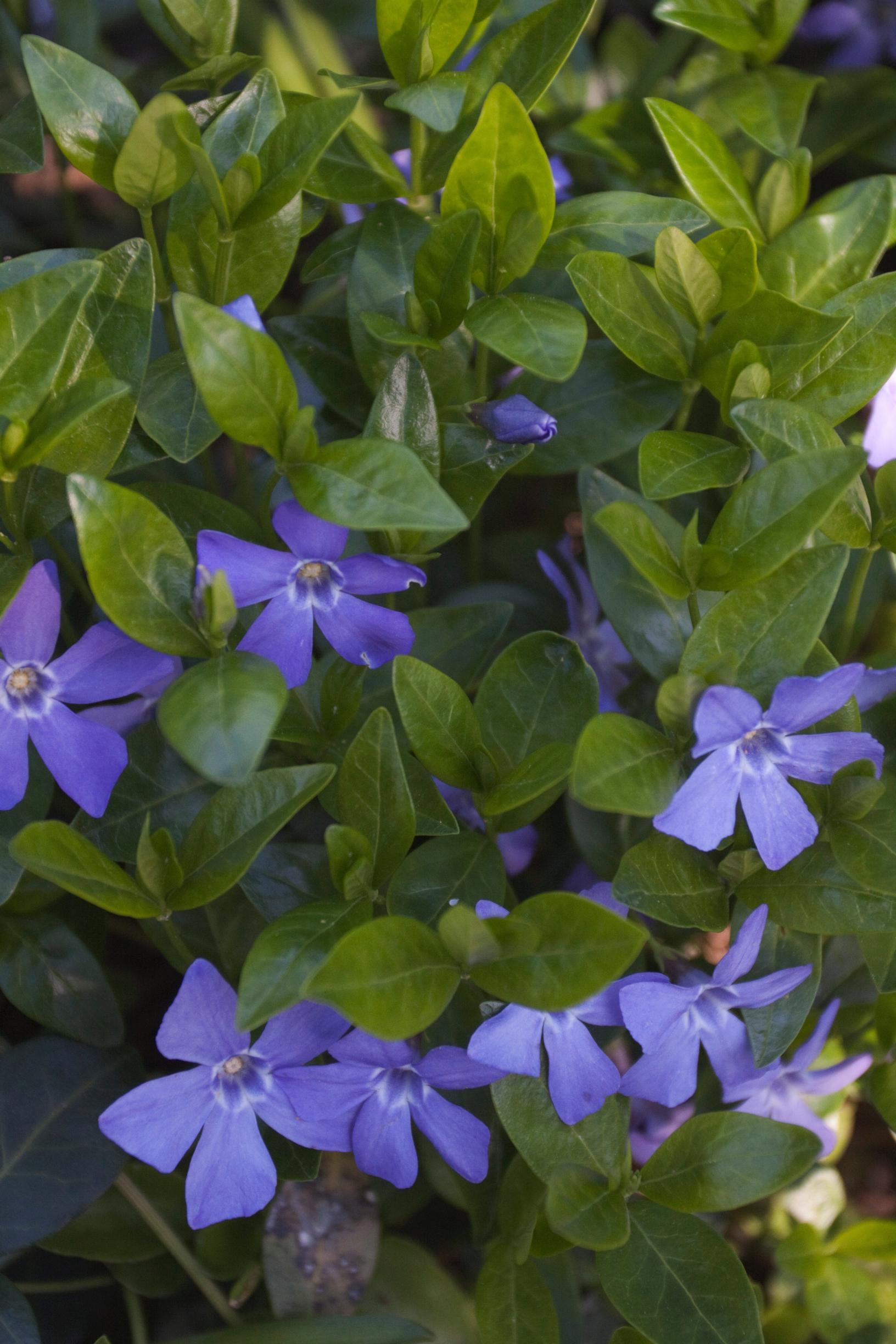
What is it? Periwinkle (Vinca minor) is an evergreen subshrub that spreads in a low, dark-green mat via above-ground runners under trees.
Why? These long-stem runners love the shade, and periwinkle starts flowering as early as May–June. The classic variety blooms in blue, but there’s also a white ‘Alba’ and a purple-red ‘Atropurpurea.’
Where to plant? In addition to the shade of deciduous trees, small-leafed pikkutalvio is perfect under rhododendrons and conifers because it appreciates similar acidic soil. Plant them about 30 centimeters (about 12 in) apart. They’re undemanding when it comes to soil.
Light requirement: partial shade to shade
Height: 5–15 centimeters (about 2–6 in)
Bloom time: May–June
Paratiisin Taimitarha nursery is located in Pori in Finnish zone II (similar to about USDA zone 5 or 6). Website: paratiisintaimitarha.fi


